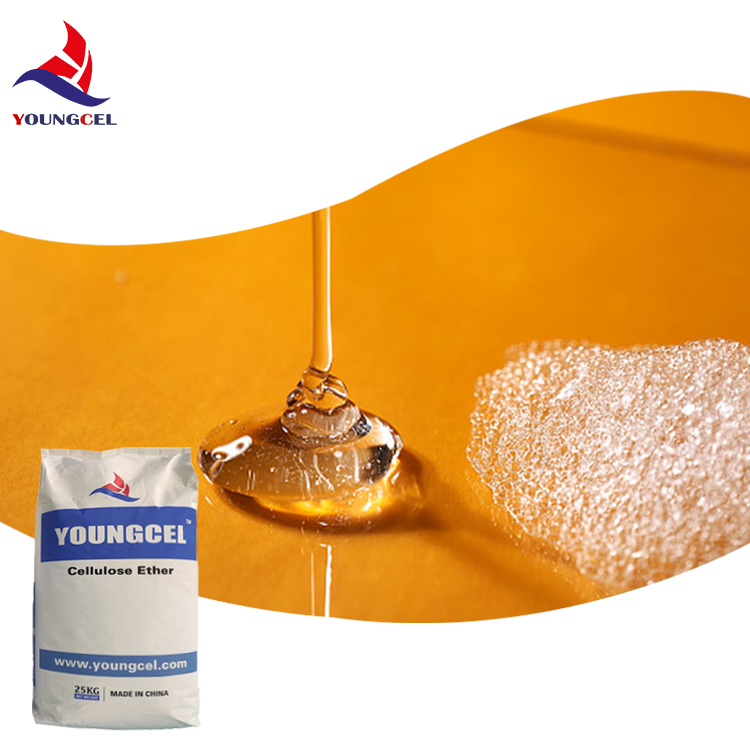Understanding Cellulose Ether in Wall Putty
Wall putty is a popular material used in construction and interior design, known for its smooth finish and ability to create a flat surface on walls. Among its various components, cellulose ether plays a crucial role in enhancing the properties and performance of wall putty. This article explores the significance of cellulose ether in wall putty formulations, its benefits, and its impact on the overall quality of wall finishes.
What is Cellulose Ether?
Cellulose ether is a derivative of cellulose, a natural polymer derived from plant cell walls. It is synthesized through a chemical process that modifies the cellulose structure, resulting in various forms of cellulose ethers, such as hydroxypropyl methylcellulose (HPMC) and carboxymethyl cellulose (CMC). These derivatives retain the beneficial properties of cellulose while offering enhanced functional characteristics, making them widely used in various applications, including construction materials.
The Role of Cellulose Ether in Wall Putty
In wall putty formulations, cellulose ether serves multiple purposes
1. Thickening Agent One of the primary functions of cellulose ethers in wall putty is as a thickening agent. It helps control the viscosity of the mixture, ensuring that the putty is easy to handle and apply. The ideal consistency is essential for achieving a smooth finish when applying the putty on walls.
2. Water Retention Cellulose ethers are known for their excellent water retention properties. In wall putty, they help keep moisture in the mixture longer, allowing for better workability and ensuring that the putty remains workable during application. This characteristic is particularly important in hot and dry climates, where rapid evaporation can hinder the application process.
3. Increased Adhesion Cellulose ether improves the adhesion of wall putty to various base surfaces, such as concrete, plaster, and masonry. The enhanced bond strength prevents peeling and cracking, which can occur when the putty fails to adhere properly to the wall.
4. Improved Texture and Finish Using cellulose ether in wall putty contributes to an even and smooth surface finish. It can reduce the formation of cracks and defects, ensuring that the final appearance meets the desired aesthetic standards. This property is particularly important in applications where visual appeal is a priority.
cellulose ether for wall putty

5. Enhanced Open Time The open time refers to the period during which the putty remains workable after application. Cellulose ethers extend this open time, providing more flexibility for applicators to adjust and refine the surface before it sets. This is especially beneficial in large projects where continuous application is necessary.
Benefits of Using Cellulose Ether in Wall Putty
The incorporation of cellulose ether into wall putty formulations offers several advantages
- Versatility Wall putty containing cellulose ether can be applied on a variety of substrates, making it suitable for different construction scenarios. Its adaptability allows it to be used in both residential and commercial spaces.
- Sustainability As cellulose is derived from natural sources, the use of cellulose ether aligns with sustainable building practices. It contributes to lower environmental impact compared to synthetic additives.
- User-Friendly Applicators appreciate the enhanced workability that cellulose ether brings to wall putty. Its properties make it easier to spread and finish, reducing the skill level required for application.
Conclusion
Cellulose ether is an indispensable component of modern wall putty formulations. Its multifunctional properties contribute significantly to the performance, durability, and aesthetic quality of wall finishes. By improving viscosity, water retention, adhesion, and overall usability, cellulose ether enhances the application experience for both professionals and DIY enthusiasts.
As the construction industry continues to evolve and prioritize high-quality materials, understanding the importance of additives like cellulose ether in wall putty will help ensure superior results in wall finishing projects. Whether renovating a home or constructing a new building, the choice of wall putty and its components can make a significant difference in achieving the desired finish and longevity.
-
The Application and Significance of Construction RdpNewsMay.19,2025
-
Industrial Grade HpmcNewsMay.19,2025
-
Building Coating Adhesive Building Coating Adhesive HpmcNewsMay.19,2025
-
Application Of Hpmc For Detergent For Detergent In DetergentsNewsMay.19,2025
-
Application Of Hpmc Cellulose In Cement-Based MaterialsNewsMay.19,2025
-
Application Of High Quality Hpmc For Construction In The Field Of ConstructionNewsMay.19,2025




